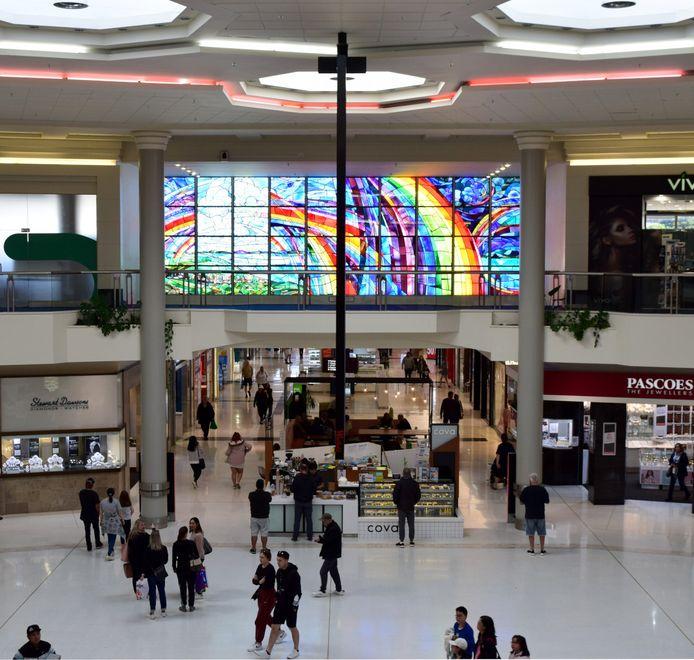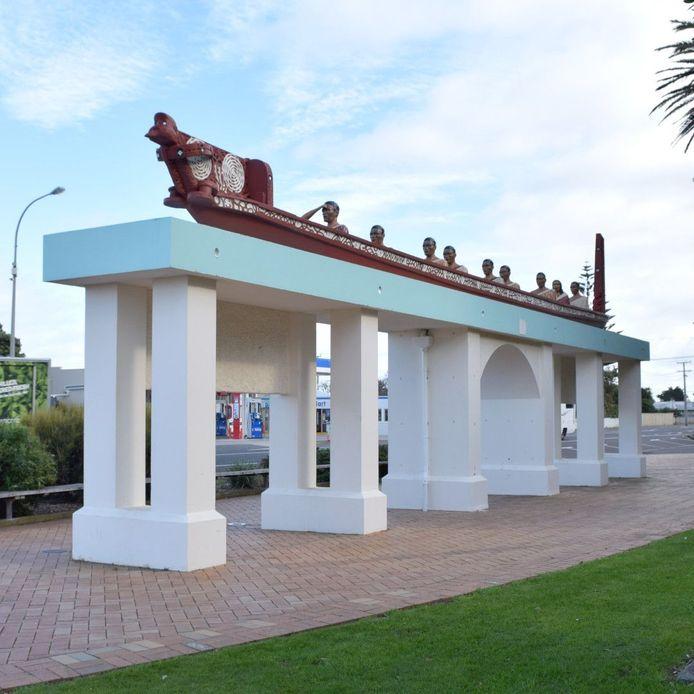About UsKo Wai Mātou?
He toi whakairo, he mana tangata
Where there is artistic excellence, there is human dignity
Aotearoa's 20th Century Public Art is at risk.
During the 20th Century many of Aotearoa New Zealand’s most talented artists turned their attention to enriching public space, often hand-in-hand with leading architects. As a result, some of the largest and most ambitious artworks in the country were placed in publicly-accessible sites throughout urban and regional centres.
Sadly, many of these works have now been destroyed, covered over, or simply lost. But many remain, undocumented and at risk due to a lack of public knowledge of their significance and cultural value.
Since around the 1990s, councils throughout New Zealand have been developing public art policies, collections, and maintenance procedures to care for their civic art treasures. Research into the role of public art, both internationally and in Aotearoa, has reinforced these approaches demonstrating that public art can deliver multiple social, economic, cultural and health benefits. This bodes well for public artworks being produced today, but what about works developed before these policies came about: those that have slipped through the gaps?
Public Art Heritage Aotearoa New Zealand has been established to ensure that future generations of New Zealanders have knowledge of, and access to, these cultural treasures. We are seeking to find, document, and protect what remains of Aotearoa’s 20th Century public art heritage (works made and installed in public spaces between 1900-1999).
This website lists all works on our register that have been through a process of research and auditing, to confirm accurate information about each work to the best of our abilities. Through this we are seeking to increase awareness about public art works, improve education resourcing about the artists and art works, and provide a means of protection if the art works are threatened by development.

L-R: Dr Bronwyn Holloway-Smith and Sue Elliott, Co-Directors, Public Art Heritage Aotearoa New Zealand.
Image: Jane Ussher, 2022.
What is 'Public Space'?
For the purposes of this initiative, public space is defined as a public-facing physical site that fits one or more of the following criteria. It is:
- Publicly accessible (could include de facto public spaces i.e. hospitals, schools & universities, churches, shopping malls, and private building foyers where public access is a key factor) and/or;
- Visible to the public (i.e. part of the natural and built environment, living in the imagination of the public) and/or;
- Publicly owned

Shona McFarlane, The Rainbow (1976), Westfield Manukau City Mall, Tāmaki Makaurau Auckland
Image: Bronwyn Holloway-Smith, Public Art Heritage Aotearoa New Zealand, 2021
What is 'Public Art'?
For an artwork to be considered “public art” it must fit all three of the following criteria:
- It was made intentionally as art
- It was, or is, located in public space (as defined above)
- It was commissioned by a public body, OR for public good, OR created/acquired/given with the intention that it would be installed in a specific public site
The scale, mobility and site specificity of a work will also be a consideration factor.
In the case of galleries, museums and archives, only works that were commissioned for enduring installation as part of the building will be considered public art.

F. A. Jones, Panenui Haurangaranga et. al., Aotea Waka Memorial (1933), Pātea
Image: Bronwyn Holloway-Smith, Public Art Heritage Aotearoa New Zealand, 2021
Our Partners
The Aotearoa Public Art Heritage Trust is a charitable trust that has been established to support the work of Public Art Heritage Aotearoa New Zealand through fundraising and other endeavours.
Alongside this, we are grateful to Toi Rauwhārangi Massey University College of Creative Arts for their support during the early stages of this project.
This website has been made possible thanks to funding from Manatū Taonga Ministry for Culture and Heritage.
We are also grateful to the Wellington City Council Public Art Fund for supporting the addition of further Wellington region works to the website in 2024.
We are working with artists, their whanau/family, estates, and owners of works to inform them about our kaupapa, seek their support for the initiative, check the accuracy of our information, check for any issues or concerns with inclusion of works in our database, and seek information on further works that may be relevant to add to our register. As part of his process we have worked with Toi Māori Aotearoa to liaise with kaitiaki of the works on this register that are by Māori artists and groups of artists.
We acknowledge that local communities often know their local histories better than anyone, and welcome approaches from members of the public who have information on 20th Century works that they think should be included in this database.
Contact us if you have information you think we should know about. We'd love to hear from you.

